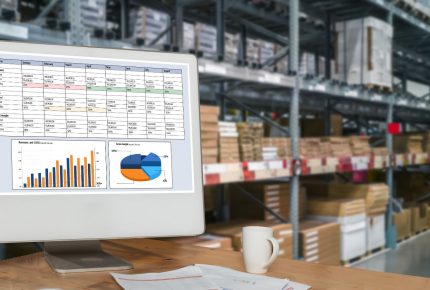Reducing Shipping Costs Through Strategic Warehouse Placement for Enhanced Supply Chain Efficiency

Reducing shipping costs is crucial for any company, especially when goods must travel long distances. Strategically locating fulfillment centers near major markets or transportation hubs helps shorten delivery routes, cut transportation expenses, and improve delivery speed.
By distributing inventory across multiple warehouses, businesses can lower last-mile costs, avoid overloading a single location, and respond to customer demand more efficiently. Smart warehouse placement strengthens supply chain management and ensures faster, more cost-effective service that supports long-term competitiveness.
Reducing Shipping Costs Through Strategic Warehouse Placement for Enhanced Supply Chain Efficiency
Core Principles of Reducing Shipping Costs Through Strategic Warehouse Placement
Where you put your warehouses has a direct effect on shipping costs, delivery times, and how well your fulfillment centers run. The right spot can mean lower shipping fees and faster arrival for your customers.
Relationship Between Warehouse Location and Shipping Costs
Warehouse location drives shipping expenses. Placing warehouses near major markets or transportation hubs reduces fuel consumption and minimizes labor time.
Being near your customers means you can skip pricey expedited shipping. You can also save by choosing areas with lower property and labor costs, even if you’re a bit farther out.
Locating warehouses near ports or rail terminals helps reduce handling and transfer costs. Aligning warehouse locations with cost-effective shipping routes reduces transportation expenses and improves profitability.
Role of Distance in Transportation Expenses
Transportation costs increase with distance since longer routes need more fuel, labor, vehicle upkeep, and packaging materials. Lessening the gap between your warehouse and delivery points means real cost savings.
Shorter routes mean less time behind the wheel, lower labor costs, and fewer delays. Plus, you can consolidate shipments more easily, which helps reduce transportation costs even more.
Transportation costs often make up the biggest slice of shipping expenses. That’s why companies use data-driven models to map out travel distances before picking fulfillment centers.
Impact of Distribution Centers on Fulfillment Efficiency
Distribution centers help you fill orders faster and keep shipping fees down. If you have multiple centers strategically located, you can dispatch from the nearest one, thereby reducing the shipping distances.
Fulfilling orders from nearby centers means you can avoid splurging on same-day or overnight delivery. It also helps you balance inventory and dodge last-minute shipping costs.
Having a network of fulfillment centers helps control your transportation and shipping costs. This is especially true when demand changes.
Key Factors Influencing Optimal Warehouse Location
Picking the right spot for your warehouse means thinking about your customers, transportation access, and the cost of land and operations. Each factor plays a role in reducing shipping costs and delivery times.
Proximity to Major Markets and Customers
When you’re close to your biggest markets, you slash delivery times and transportation expenses. A fulfillment center near a dense population or retail hub lets you meet customer demands fast.
GIS tools help you analyze where your customers are and spot market changes, so you can make data-driven decisions about warehouse placement. That way, you can offer cost-effective shipping without blowing your budget.
Access to Transportation Networks and Ports
Easy access to highways, railroads, airports, and ports is essential for maintaining efficient shipping processes. If your warehouse is near these spots, you can reduce transit times and fuel use.
Ports matter, especially for imports and exports. A warehouse near a major port can help you avoid customs delays and extra expenses. Plus, you get more options for balancing shipments between truck and rail, which can lower transportation costs.
Real Estate and Operational Cost Considerations
Land prices, taxes, and local labor availability all affect warehouse expenses. Sometimes, urban locations offer great proximity but come with a hefty price tag.
Operational costs like utilities, maintenance, and security add up, too. Sometimes it’s smarter to go with a slightly farther site if it means lower overall expenses. That’s a long-term play for cost savings.
Leveraging Technology and 3PL Partnerships for Strategic Advantage
Using technology and teaming up with third-party logistics (3PL) providers can help you make smarter warehouse placement decisions. These tools analyze data, optimize shipping routes, and put inventory where it’s needed most.
3PLs bring expertise and resources that make your fulfillment network more flexible and cost-effective.
Data-Driven Warehouse Selection and Route Optimization
Companies use data analytics and software to choose warehouse locations. This helps reduce transit times and transportation costs. To find the best locations for your fulfillment centers, check shipping volume, customer locations, and carrier options.
Route optimization software goes a step further by planning the fastest, most cost-effective shipping paths. Real-time tracking lets you adjust on the fly, whether it’s traffic or weather throwing you a curveball.
Combining these tools helps you predict shipping fees and lead times more accurately. It also keeps your supply chain management lean and responsive.
Benefits of Third-Party Logistics Providers
3PLs give you access to logistics know-how, technology, and established fulfillment centers, without having to build it all yourself. They scale up or down as your demand shifts.
With a 3PL’s network, you get strategically placed warehouses that boost delivery speed and reliability. Their software helps track shipments, manage inventory, and analyze data. This support leads to cost savings and better shipping.
Dynamic Inventory Distribution Strategies
Spreading inventory across multiple warehouses can shrink shipping distances and costs. Companies use data-driven models to decide how much to keep at each location, based on demand.
If the market shifts, you can move stock to where it’s needed most, eliminating overstock in one place and shortages in another. 3PLs help manage this flow, using warehouse management systems (WMS) for real-time visibility and smooth replenishment.
Sustainability, Environmental Impact, and Customer Satisfaction
Where you put your warehouses affects the environment and how happy your customers are. Done right, it can reduce emissions, speed up deliveries, and keep you nimble as markets change.
Reducing Carbon Footprint in Warehouse Networks
Placing fulfillment centers closer to key markets means fewer miles traveled, which cuts fuel use and greenhouse gases. That’s good for your carbon footprint and shipping expenses.
Energy-efficient warehouse operations, such as LED lighting, solar panels, and even electric vehicles, help, too. Tracking emissions data lets you spot trouble spots and optimize routes for sustainability and cost savings.
Enhancing Customer Experience Through Faster Delivery
Warehouses near your customers mean you can offer quicker shipping, sometimes even free shipping. Real-time inventory management helps you avoid delays and mix-ups, so customers get what they ordered, fast.
Technology and smart placement help you meet customer needs for quick delivery. This keeps shipping costs low and supports your sustainability goals.
Adapting to Evolving Market Demands Sustainably
Markets change fast, and regulations keep shifting. Fulfillment centers in growth regions help you keep up with demand and stay green at the same time.
Sustainable practices help you succeed in the long run. These include cutting down on waste, using bubble wrap wisely, and creating energy-efficient warehouses. Investing in technology and smart locations supports both your bottom line and the planet.
Frequently Asked Questions
How can the proximity of a warehouse to key markets impact shipping expenses?
Closer fulfillment centers mean shorter shipping routes and less fuel burned. That saves on transportation costs and speeds up delivery times, so you’re not stuck paying for last-minute rush shipping.
What strategies can businesses employ to optimize inventory distribution across multiple warehouses?
Split your stock by region to minimize shipping distances. Use data to predict where sales will be hottest, so you’re not overstocked in one spot and empty in another. That’s a data-driven way to keep costs down and meet customer demands.
In what ways do regional shipping carriers affect overall cost reduction for warehouse-placed goods?
Local carriers usually offer better shipping rates for short hauls. They’re flexible, and they can deliver faster, which fits perfectly with strategic warehouse placement and helps in reducing shipping costs.
How can warehouse automation contribute to lowering the total cost of shipping?
Automation speeds up picking and packing, which cuts labor costs. It also reduces errors, so you avoid costly returns and delays. The faster you process orders, the sooner you deliver, boosting both profitability and customer satisfaction.
What considerations should be made when selecting warehouse locations to improve logistics efficiency?
Think about how close you are to customers and suppliers, access to major highways or ports, and local shipping rates. The right location supports timely delivery and keeps your shipping expenses in check. If you want to talk through your options, contact us today.
How do bulk shipping discounts work in relation to strategically placed warehouses?
If you set up fulfillment centers closer to your key markets, you can consolidate shipments by region. That means you ship in larger batches, which often qualifies you for bulk discounts from carriers.
These cost savings directly reduce your shipping expenses and transportation costs, helping you offer more cost-effective options, including free shipping, without hurting your bottom line.
In the long term, this data-driven approach to warehouse operations and supply chain management can really cut down on delivery times and shipping fees. If you want to learn how to optimize your shipping rates or improve your warehouse management systems (WMS), contact us today.
Nebraska Warehouse One-Stop-Shop | Technology Enabled 3PL Value-Added Services Warehouse | Freight Broker | Logistics
Nebraska Warehouse doesn’t just help to facilitate your shipments, but we are truly a one-stop-shop solutions provider. Our services include:
- Professional Storage Development and Management
- Quality controlled Environment
- Responsive, Personal Customer Service
- Reasonable Price
- Real Estate Development and Management
- LTL & FTL Shipping
- Refrigerated Trucking & Storage
- E-Technology Software
- Transportation Freight
- Dedicated Contract Warehousing
- 3PL Public Warehousing
- 3PL Specifications
Nebraska Warehouse One-Stop-Shop | TechnologyEnabled 3PL Value-Added Services Warehouse | Freight Broker | Logistics
Nebraska Warehouse doesn’t just help to facilitate your shipments, but we are truly a one-stop-shop solutions provider. Our services include:
Latest News
The latest information about our Omaha storage warehouse services
Get in touch
Address
10064 S 134th Street, Omaha, NE 68138
Telephone
+1 (402) 896-2200









